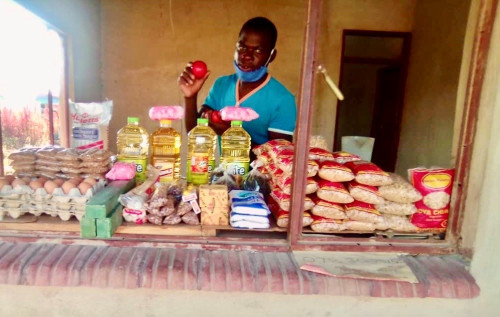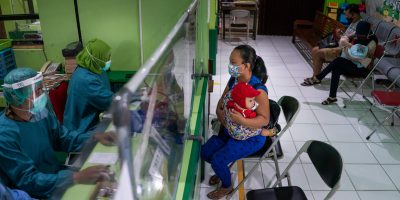This post was written by Ian Scoones and first appeared on Zimbabweland.
COVID-19 has taken hold in Zimbabwe with a significant growth in community transmission observed in the past weeks. On July 24th, the total reported cases were 2296, with 32 deaths. This is likely the tip of a much bigger iceberg given under-reporting and limiting testing. President Mnangagwa has re-imposed a strict lockdown in response, including a dawn to dusk curfew, further limits on movements and restrictions on transport and business.
The relative easing of COVID-19 measures over the past weeks was clearly premature given the huge flow of infections from South Africa via returnees coming home. In the last blog on the pandemic in Zimbabwe we discussed this mass migration of those who had lost their jobs or had become ill in what is now one of the major foci of COVID-19 in the world. Zimbabwe’s close proximity to South Africa is proving highly risky.
This is the third update from our field sites across the country, each focusing on how COVID-19 is affecting rural areas (see previous blogs here from 27 April and here from 15 June). Reports from all sites were relayed to me in a long phone conversation over the weekend. As the effects of lockdown have combined with an already deteriorating economy, the situation in Zimbabwe is bad. To survive people are resorting to a range of informal and sometimes illegal activities. The common view is that it’s better to risk COVID-19 in the future than die of hunger now.
The smuggling economy
Our colleagues in Mwenezi, Chiredzi and Matabeleland South in particular highlighted the massive growth in smuggling of goods, cash and people across the border from South Africa, and the implications for the spread of the virus. With restrictions on border crossing and the banning of private transport, the demand for goods has heightened and with this there have been massive hikes in prices.
A widespread network of smugglers, sometimes with the direct involvement of security forces and customs officials on both sides of the border, has emerged. Links are made to shop owners in Musina in South Africa who transport goods to the border, and link up with traders and transporters who move them throughout Zimbabwe. Paying off officials adds to the cost, but the result is that a range of goods – groceries, clothes, agri-chemicals and more – are supplied throughout Zimbabwe.
With some shops closed and others operating with shorter business hours and less stock, suppliers sell on to mobile shops that move around rural areas and locations/townships in urban areas. Much activity happens at night to avoid the authorities who restrict vending or may impose arbitrary fines. These are elaborate value chains, with many connections, and with people at every stage demanding a cut. The consumer inevitably suffers as prices go up and up, inflated further by the collapsing value of the local currency. Government and local councils also lose out as the taxes, customs duties and rates that are normally paid are lost. This huge trade is largely illegal, and many cross at secret points in the highly porous border.
This massive informalisation of the economy extends to how the supply of cash is dealt with. In the past, remittances from relatives in South Africa and elsewhere were usually paid through standard agents – like Mukuru, Western Union and so on – based in towns and cities. While still mostly operating, they no longer can be reached by many due to restrictions on access to town centres. This has become worse with the limitation of opening hours for businesses and the recent curfew.
This means that the lifeline of remittance cash in the absence of jobs has to be sought through new routes. Here the traders who illegally transport goods across the border also assist. Zimbabweans with South African bank accounts can receive and then withdraw large amounts of cash and send it via traders, lorry drivers and others to relatives on the other side of the border. Those moving the cash take a proportion for the service – up to 30% – but ensure that relatives’ money reaches their kin in Zimbabwe to keep them alive.
Mass migrations of people and viruses
The movement of people from South Africa (as well as the UK, Botswana and other neighbouring countries) resulted in the establishment of the virus in Zimbabwe. A month back nearly all cases were imported, but now community transmission exceeds these in the reported statistics. The migration of people with the virus across a region that has long relied on labour migration is one of the major stories of the pandemic in southern Africa.
When the pandemic first struck, the South African government built a massive (and very expensive) new fence along the border with Zimbabwe, notionally aimed at stopping Zimbabweans flooding into South Africa as the economy collapsed further, and so spreading the virus. But it was movement in the other direction that has driven the pandemic, with many Zimbabweans in South Africa losing jobs and fleeing poverty to be with their families back home. Excluded from social security measures, the migrant populations in South Africa not only suffer xenophobic attacks but now viral infection.
Those who return with the virus are often smuggled across the border with goods in lorries and trucks, hiding from the authorities. Illegal crossings are used to dodge the requirements to go to quarantine centres that have become notorious places, rumoured to spread disease through unsanitary conditions. Alongside normal returnees have been criminals who have been deported back to Zimbabwe, often returning to crime in the process. Returnees who arrive back in rural villages across Zimbabwe are often hidden from authorities and neighbours, and are sometimes protected by local officials and traditional leaders if well connected. It is no surprise that the pandemic has established itself in Zimbabwe.
Volatile markets: challenges for agricultural producers
As discussed in previous blogs, agricultural producers have been hit hard by the pandemic, notably through the restriction of movement and constrained access to markets. As the economy continues to implode, demand also drops. The horticultural producers from our research sites that surround Masvingo for example have cut their production by 40% and shifted to local drying and processing of vegetables as contracts with supermarkets and other traders have ceased. This has affected all household economies, as especially in the dry season (which it is now) income from horticultural production is vital.
Farmers are much better off than their counterparts living in the town, however. As our team reports, in all parts of the country those without land and some form of agricultural production are suffering badly. Hunger is really stalking the townships in all parts of the country. Farmers who have reduced production have had to diversify livelihood activities, switching to trading in particular; as our colleagues point out, nearly every household has someone trading in the informal COVID economy.
Due to the loss of value of the Zimbabwe dollar, now trading against the US dollar on the black market at over Z$120 per US dollar, many have adopted barter trade arrangements, informalising exchange yet further. This operates across international borders as well as within the country.
In rural areas, for example, farmers exchange grain, groundnuts, nyimo and other products for groceries supplied by mobile traders. In the sugar-growing areas, workers for the estates or A2 farmers who are able to buy 20kg of sugar per month at a reduced rate as part of their employment package, trade this for a range of goods. Sugar is an especially valuable currency as it holds its value well and is in constant demand. For farmers, agricultural products are fast replacing cash as a medium for exchange in the informalised COVID economy.
It is tobacco marketing season in our site in Mvurwi at the moment, and this is a rare focus of vibrant economic activity. Mvurwi town is a hive of activity with five auction floors now competing for trade. Payments are made half in US dollars and half in local currency, and although not as profitable as in the past, the tobacco sales are providing much-needed income in the area.
However, as our colleague in Mvurwi notes, the crowded scenes in the marketing areas and in the transport hubs do not result in public health compliance. Tobacco marketing, like the increasingly large church gatherings and major funerals, are feared as foci for infection. The police intervene and occasionally arrest people (sometimes in large numbers) for contraventions, but the next day things look much the same. Maintaining public health while continuing with economic activity is a tough balance.
Pandemic politics in a failing state
Zimbabwe in many respects has followed the WHO global recommendations on COVID-19 very assiduously. Interventions were early, movements have been restricted, masks are compulsory in public places and on transport, advice is to wash hands regularly and stay at home and so on. But these regulations just cannot work when people are starving, in desperate need of income. They cannot work either when the health services on which such measures rely are woefully inadequate or when health workers are hugely underpaid. Today nurses are on strike demanding better conditions, and in hospitals it is trainee nurses who are on the frontline, many now contracting the virus.
Without a functioning state that can provide security – through safety nets and support for livelihoods – and pay health workers and guarantee their safety, public health measures are quickly abandoned. Add to this the growing distrust of the state, and the likelihood of people following government edicts declines yet further.
At the beginning of the outbreak, when it seemed that this was a problem for others elsewhere, there was a sense of joint commitment: coming together to address something threatening and unknown. With the virus spreading fast and with the lockdown measures having decimated livelihoods this collective sense of purpose has gone.
Our colleagues report that, across the country, opportunistic crime has risen, along with gender-based violence. In all our sites, there is a palpable sense of frustration and tension; a sense of being left alone, abandoned by the state.
Trust in authority has been undermined too, and this has been massively exacerbated by the way the government and ruling party have acted. The scandal over corrupt procurement of PPE and other COVID-related materials that saw the Health Minister fired, charged (and then given bail) has enraged many. The heavy-handed tactics of the security forces – both the army and police – has generated resentments, as the informal trade that is the Zimbabwean economy has to pay off security officials at every turn, with bribes just adding to costs of an already expensive life. That the state is clamping down on opposition activists and journalists who are exposing corruption and restricting protests against the state is just further justification for a growing disquiet.
Rather than the sense of national collective effort in the face of crisis, it seems that everyone is on their own in the struggle to survive the virus.
What next?
The next weeks will be crucial ones in Zimbabwe. Will the virus continue to spread resulting in the scale of death and suffering now being seen in South Africa? Or will the measures being imposed now contain it? Will the resentments that have built up over the failure of the state – alongside scandals of corruption – result in strikes and protests that some have called for? Or will most Zimbabweans just continue to suffer; just about surviving and innovating continuously in response to the fast-changing economic, political and epidemiological conditions?
Our team will continue to listen to stories from the field and monitor what is happening, so watch out for the next update in a few weeks’ time.
Many thanks to all the research team from across Zimbabwe for continuing interviews and collecting local information on the COVID-19 situation (and for the photos from different sites).






